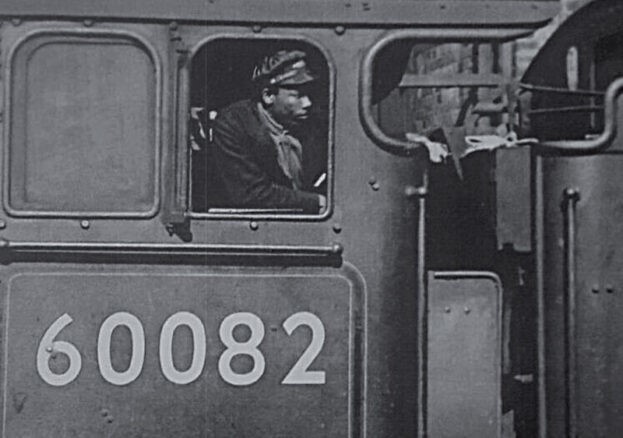As it turns 171 years old in October 2023, here's an offensively short biography of King's Cross station.

Pile of dust: Lewis Cubitt's unfussily splendid King's Cross station opened on 14 October 1852, on the site of a former smallpox hospital and a Pantagruelian pile of dust. (To tide over the flow of passengers — particularly those for 1851's Great Exhibition — a temporary station was built.) An adjoining Underground station (then called simply King's Cross, none of that St Pancras nonsense) was built in 1863, ready and waiting.
Named after a wa**er: King's Cross station might've been the name of the station for its entire 170 years, but it's derived from a pathetically shortlived statue. The King's Cross was a chi-chi folly erected to the greatness of Hugh Laurie impersonator, George IV. Alas, Londoners didn't think Georgie Boy was that great, and had the bastard torn down at their earliest convenience.

What the duck? That's not the only statue to cause controversy. In 2016, possibly the quaintest protest of all took place, when rubber ducks were placed at the foot of a new sculpture of Sir Nigel Gresley on the station concourse. Gresley designed the Mallard steam locomotive, but plans to feature bronze duckies in his sculpture were poo-pooed by the Gresley Society Trust as "demeaning".
Going loco: Another iconic steam engine to depart regularly from King's Cross was the Flying Scotsman — the first locomotive to reach 100mph. You can occasionally catch a ride on the century-old train, and it'll still get you to London quicker than a Lumo. The Flying Scotsman's name was also lent to a rough and ready strip joint in the neighbourhood during the 1980s.

Fireproof hotel: To deal with the glut of new rail passengers, the Great Northern Hotel opened in 1854, boasting 'baths always ready', not to mention the 'fact' it was a fireproof hotel (perhaps because there were baths filled with water everywhere). To be fair, 168 years on, the hotel still hasn't burned down.
Black history: King's Cross station was where Britain's first Black train driver, Wilston Samuel Jackson, worked — driving both the Mallard and the Flying Scotsman, as well as proving a bit of a hero during an accident at Finsbury Park in 1964.

Tragedies: A number of accidents and tragedies have befallen King's Cross over the years. Of those in living memory, the 1982 fire on 18 November 1987, saw 31 people killed and 100 injured, following an escalator fire in the Underground station. On 7 July 2005, King's Cross St Pancras was the target for one of a number of coordinated terror attacks across the city — with shocked, bloodied victims staggering out the front of the station.
King's Cross Airport? In 1931, the genius?/doolally? Charles Glover unveiled plans to whack an elevated pinwheel-shaped airport on top of the train station. In the end they decided to stick with trains.

Fugly green hoarding: In the 1970s, some brainbox decided to whizz over the gorgeously simple lines of Cubitt's twin-shed station, with some godawful green hoarding. Generations grew up unfamiliar with the original frontage of the station, until 2012, when it was dramatically re-revealed, courtesy of a circular saw/common sense.
Makeover: That same £550m makeover featured a splendid Arup/John McAslan + Partners-designed fanned waffle of a roof. Its gentle colour-changing ways are almost soothing enough to make you forget the 17:22 to Cambridge has been cancelled. A beer in the Parcel Yard pub has a similarly soothing effect.
Although the station's new concourse was designed in the Noughties, we've found compelling evidence of why its shape was actually determined thousands of years ago.

Celebrity commuters: In 1997, a boy named Harry Potter visited King's Cross station, using Platform 9 ¾ to get to school. Harry hysteria followed, with replica Platform ¾s doing appearing/disappearing acts all over King's Cross, until they finally settled on putting it outside a spenny giftshop. Infamously, when she was writing the books, Rowling was actually thinking of Euston station.
Curiously, a long-standing rumour suggests that Queen Boudicca is buried beneath platform 10, right next to the Hogwarts Express. The only 'evidence' for the legend is that the King's Cross area was once known as Battle Bridge, thought by some to be a reference to the climatic battle between the Romans and Boudicca's Iceni forces.
Platform 0: In a real-life Potteresque twist, King's Cross has a platform 0 — owing to the fact that when it was added to the station in 2010, the platform was next to platform 1, so naming it platform 12 would've probably caused confusion.




